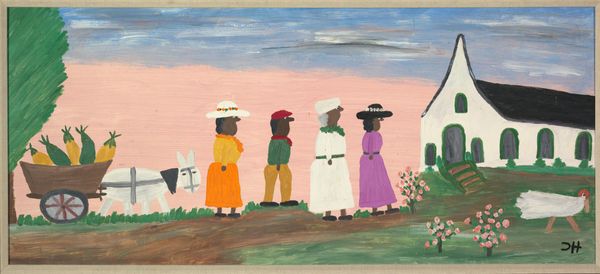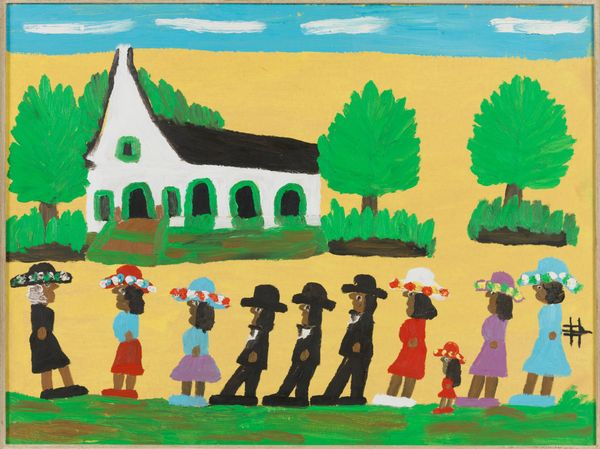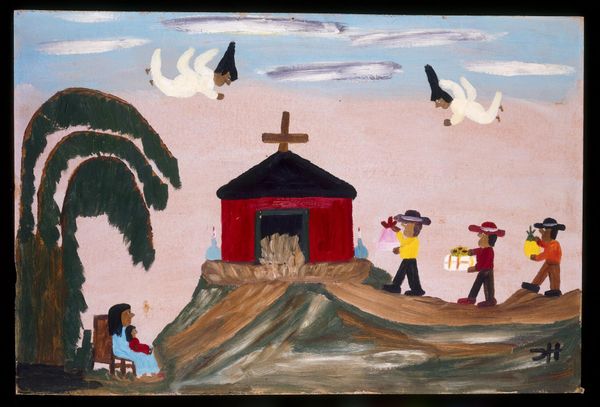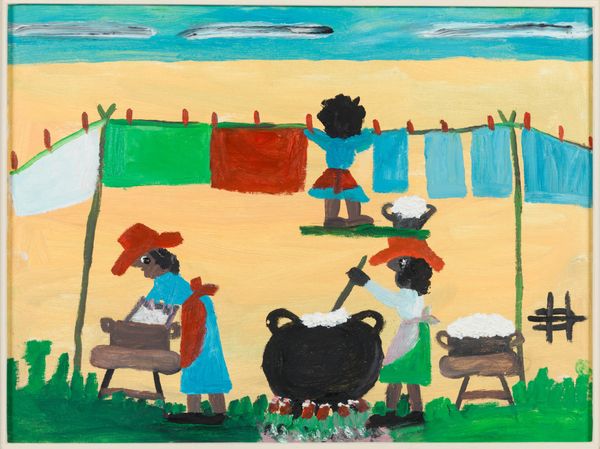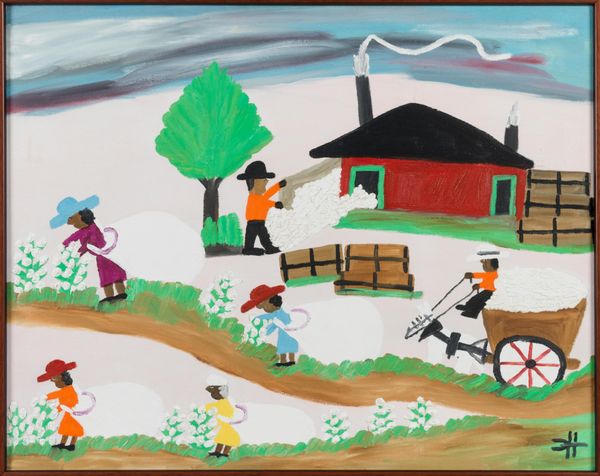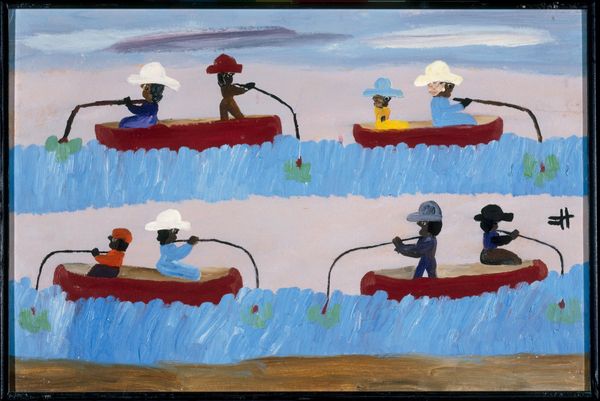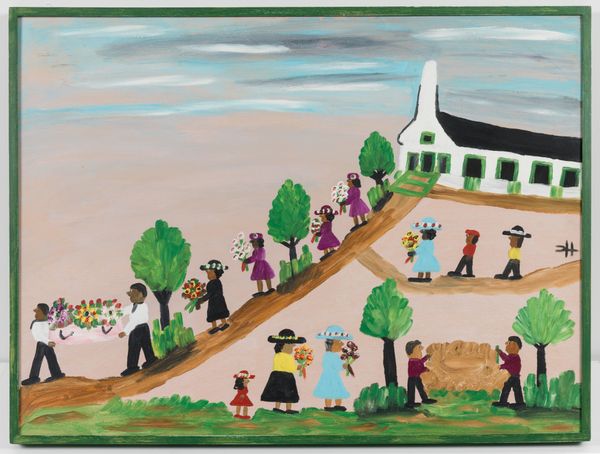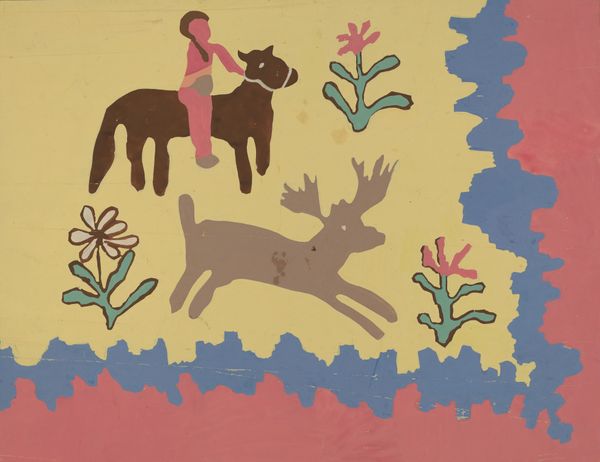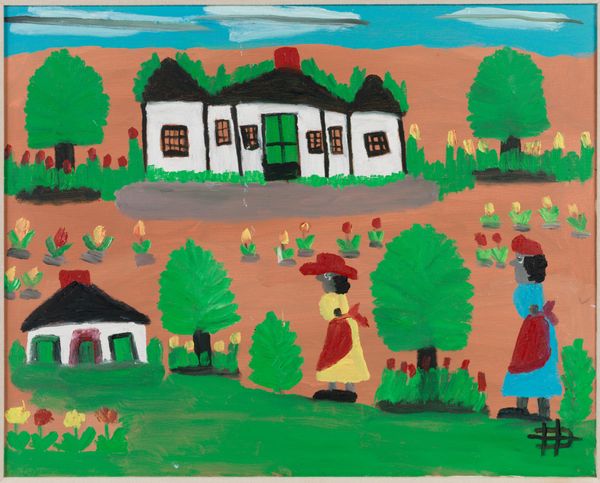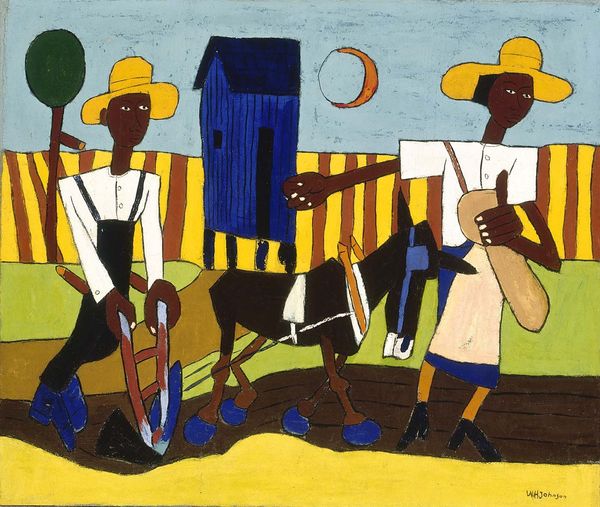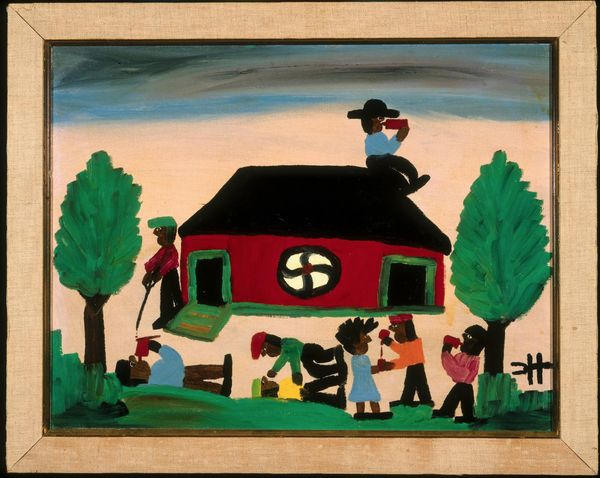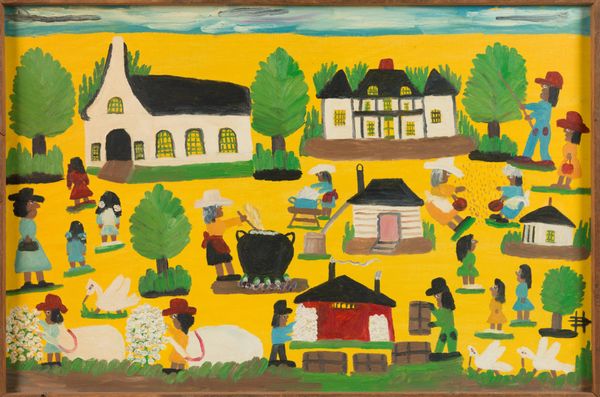
painting, impasto
#
painting
#
landscape
#
figuration
#
social-realism
#
impasto
#
folk-art
#
naive art
#
genre-painting
Dimensions: 44.45 x 59.69 cm
Copyright: Clementine Hunter,Fair Use
Curator: Here we have Clementine Hunter’s "Picking Cotton," painted in 1969. It’s a fantastic example of her self-taught, narrative style. What are your initial impressions? Editor: Strikingly simple, isn’t it? The composition is quite direct: two rows of figures, bold blocks of color… very elemental. Curator: Hunter’s work provides powerful insights into the lives of African Americans in the rural South during the 20th century. As a Black woman working and living on a plantation, her perspective is particularly valuable; she reclaimed the gaze, dictating representation on her own terms. This canvas vividly illustrates labor—cotton picking. It gives viewers insight into a world we must try to comprehend to grasp its significance. Editor: Absolutely. The figures are somewhat abstracted, but the repeating form creates rhythm across the pictorial plane. I'm interested in how the pink, possibly the fields in bloom, almost swallows the land and figures in a way, but it contrasts nicely with the earthy green and the browns of the ground itself. What do you read into it? Curator: It's an environment of struggle. While the pink can represent fields in bloom, it might also suggest a dreamlike quality, perhaps a collective hope amid difficult labor. It’s poignant that despite its raw appearance, her color choices create such depth. Hunter uses this setting to comment on class, labor, and African-American culture in a way only an insider truly could. Note too how these workers stand resolute with cotton sacks in tow. Editor: The repeated form of the figures, though, feels almost…decorative. This tension, perhaps, speaks to something beyond literal depiction; I see elements of primitivism through these simple lines and shapes. I feel this naive representation further separates our modern gaze from that of early 20th-century plantation life, an intentionally flattened representation meant to evoke something felt versus a reality actually lived. Curator: Indeed, Hunter’s paintings invite complex interpretations that blend social critique with visual narrative. I would never argue with seeing in her aesthetic a sense of emotional distance and a raw need to represent a history too difficult to name explicitly. The work gives rise to numerous debates and differing interpretations that make viewing worthwhile. Editor: Yes, a wonderful demonstration of visual strategy communicating powerful feeling!
Comments
No comments
Be the first to comment and join the conversation on the ultimate creative platform.
